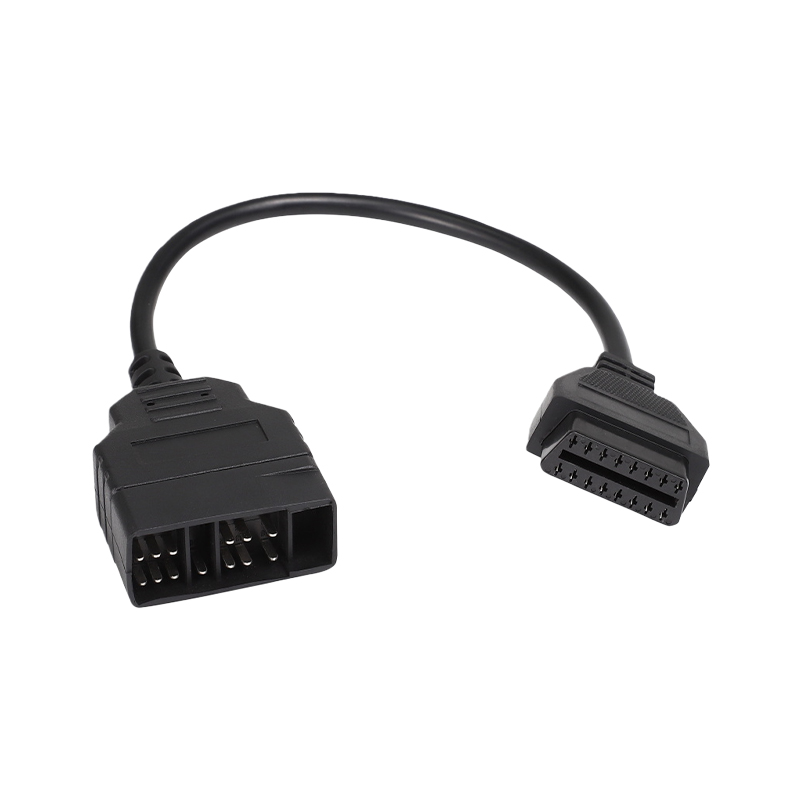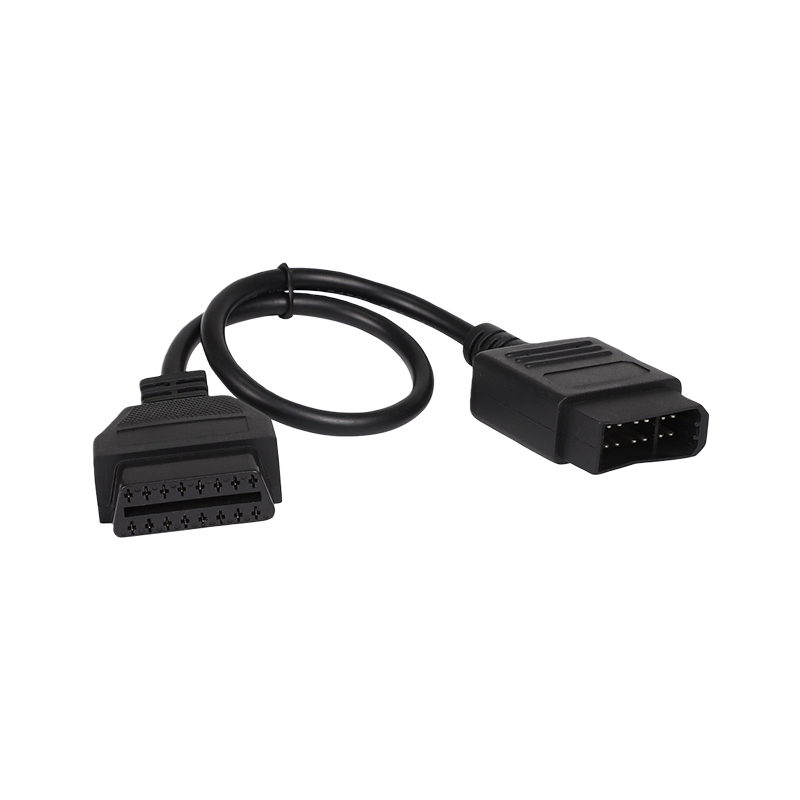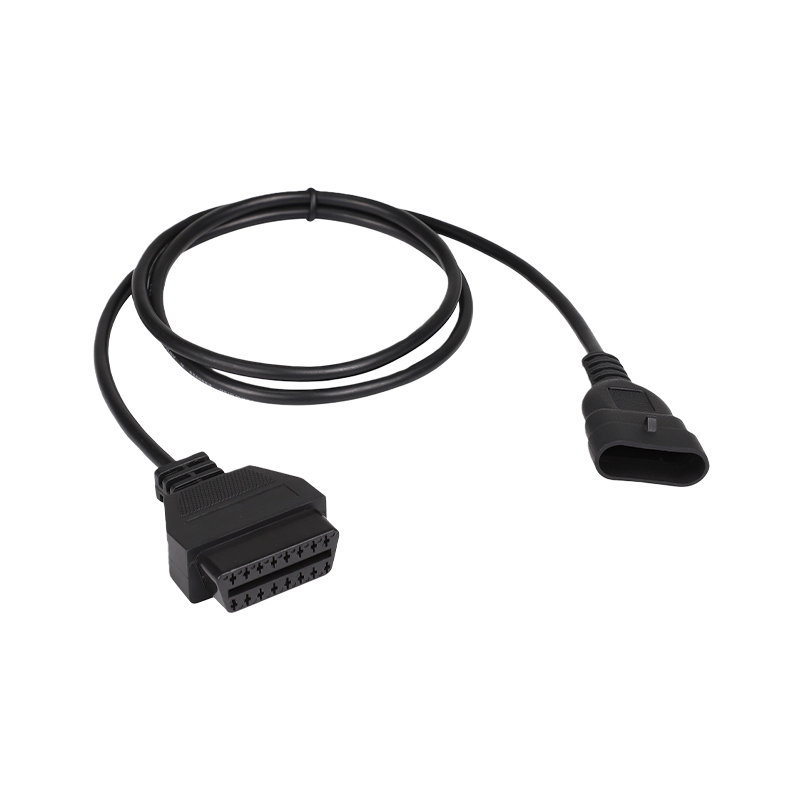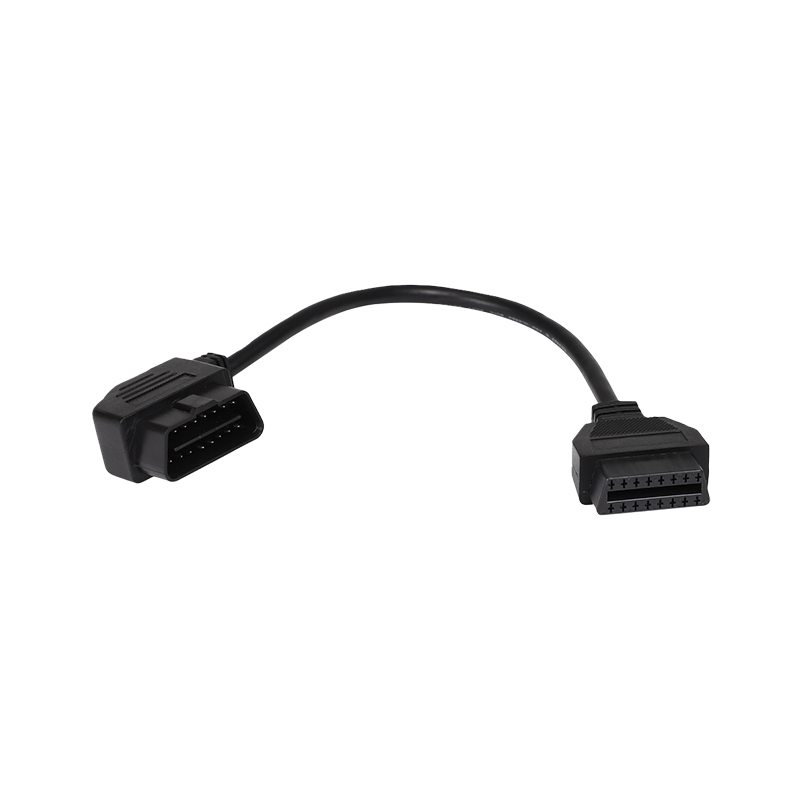How does an OBD connection cable empower automotive diagnostics and data interaction with high reliability and precise compatibility?
Release Time : 2025-11-12
In the context of increasingly complex modern automotive electronic systems, the On-Board Diagnostics (OBD) interface has become a core channel for vehicle health monitoring, fault diagnosis, performance tuning, and vehicle-to-everything (V2X) data acquisition. As a crucial bridge connecting diagnostic equipment to the vehicle's OBD port, high-quality OBD connection cables—especially dedicated cables equipped with standard 16-pin female and male connectors—have become indispensable professional tools for repair technicians, automotive engineers, and smart hardware developers due to their precision manufacturing processes, stable electrical performance, and broad vehicle compatibility.
The core advantage of an OBD connection cable lies first and foremost in its strict adherence to international standards. Its 16-pin interface fully complies with the SAE J1962 specification, ensuring physical and electrical compatibility with all OBD-II and EOBD certified vehicles worldwide. The female connector is used to interface with diagnostic tools, data loggers, or development boards, while the male connector is precisely inserted into the vehicle's OBD interface. The pin layout, spacing, and plating thickness all conform to the ISO 15031-3 standard. Key signal lines (such as CAN_H, CAN_L, K-Line, and L-Line) employ a shielded twisted-pair structure to effectively suppress electromagnetic interference and ensure high-speed communication stability, making them particularly suitable for the complex electromagnetic fields encountered in the high-voltage environments of new energy vehicles.
The materials and structural design highlight professional-grade durability. The outer shell is made of high-strength flame-retardant PBT or nylon engineering plastic, with a temperature range of -40℃ to +125℃, and is impact-resistant and anti-aging. The internal terminals are made of phosphor bronze with gold or nickel plating, achieving a contact resistance of less than 50mΩ and a mating life of over 10,000 cycles without loosening. The cable sheath uses TPE or PUR elastomer, which is flexible, wear-resistant, and can withstand repeated bending and oil corrosion. Some industrial-grade products also integrate stress-relief sheaths and waterproof gaskets, suitable for use in workshops, outdoors, or extreme conditions.
In terms of electrical performance, high-quality OBD connection cables ensure signal integrity and power supply reliability. Built-in overvoltage protection and ESD electrostatic discharge protection circuits prevent diagnostic equipment from being damaged by vehicle power fluctuations; the power pin (Pin 16) supports continuous 7A current output, meeting the power supply requirements of high-performance scanning tools or in-vehicle terminals. Full impedance matching and low crosstalk design ensure stable CAN bus communication rates of 500kbps or even 1Mbps, avoiding data packet loss or bit errors, providing a solid foundation for real-time fault code reading, ECU programming, and remote OTA upgrades.
Broad compatibility, adapting to all vehicle types from traditional gasoline vehicles to hybrid and pure electric vehicles, including mainstream brands such as Volkswagen, Toyota, Ford, BMW, and Tesla. It also supports multiple protocols (such as ISO 9141-2, KWP2000, SAE J1850, CAN 2.0B), seamlessly connecting to professional diagnostic equipment such as Autel, Launch, and Bosch, as well as general-purpose modules such as ELM327 and OBDLink. Customized services also provide extension cables, splitters, USB/Bluetooth adapters, and other derivative solutions to meet the needs of R&D testing, fleet management, or in-vehicle intelligent device integration. Ultimately, the value of an OBD connection cable lies not only in its ability to connect, but also in its millimeter-level precision and millisecond-level response, safeguarding the accuracy and safety of every diagnostic. When technicians use it to read engine fault codes, when engineers collect battery management system data, and when car owners connect to a smart app to check fuel consumption, this seemingly ordinary cable becomes a reliable messenger for human-machine communication. In an era of rapid evolution towards automotive intelligence and connectivity, high-quality OBD connection cables are silently and steadfastly supporting the data pulse of the entire mobility ecosystem.
The core advantage of an OBD connection cable lies first and foremost in its strict adherence to international standards. Its 16-pin interface fully complies with the SAE J1962 specification, ensuring physical and electrical compatibility with all OBD-II and EOBD certified vehicles worldwide. The female connector is used to interface with diagnostic tools, data loggers, or development boards, while the male connector is precisely inserted into the vehicle's OBD interface. The pin layout, spacing, and plating thickness all conform to the ISO 15031-3 standard. Key signal lines (such as CAN_H, CAN_L, K-Line, and L-Line) employ a shielded twisted-pair structure to effectively suppress electromagnetic interference and ensure high-speed communication stability, making them particularly suitable for the complex electromagnetic fields encountered in the high-voltage environments of new energy vehicles.
The materials and structural design highlight professional-grade durability. The outer shell is made of high-strength flame-retardant PBT or nylon engineering plastic, with a temperature range of -40℃ to +125℃, and is impact-resistant and anti-aging. The internal terminals are made of phosphor bronze with gold or nickel plating, achieving a contact resistance of less than 50mΩ and a mating life of over 10,000 cycles without loosening. The cable sheath uses TPE or PUR elastomer, which is flexible, wear-resistant, and can withstand repeated bending and oil corrosion. Some industrial-grade products also integrate stress-relief sheaths and waterproof gaskets, suitable for use in workshops, outdoors, or extreme conditions.
In terms of electrical performance, high-quality OBD connection cables ensure signal integrity and power supply reliability. Built-in overvoltage protection and ESD electrostatic discharge protection circuits prevent diagnostic equipment from being damaged by vehicle power fluctuations; the power pin (Pin 16) supports continuous 7A current output, meeting the power supply requirements of high-performance scanning tools or in-vehicle terminals. Full impedance matching and low crosstalk design ensure stable CAN bus communication rates of 500kbps or even 1Mbps, avoiding data packet loss or bit errors, providing a solid foundation for real-time fault code reading, ECU programming, and remote OTA upgrades.
Broad compatibility, adapting to all vehicle types from traditional gasoline vehicles to hybrid and pure electric vehicles, including mainstream brands such as Volkswagen, Toyota, Ford, BMW, and Tesla. It also supports multiple protocols (such as ISO 9141-2, KWP2000, SAE J1850, CAN 2.0B), seamlessly connecting to professional diagnostic equipment such as Autel, Launch, and Bosch, as well as general-purpose modules such as ELM327 and OBDLink. Customized services also provide extension cables, splitters, USB/Bluetooth adapters, and other derivative solutions to meet the needs of R&D testing, fleet management, or in-vehicle intelligent device integration. Ultimately, the value of an OBD connection cable lies not only in its ability to connect, but also in its millimeter-level precision and millisecond-level response, safeguarding the accuracy and safety of every diagnostic. When technicians use it to read engine fault codes, when engineers collect battery management system data, and when car owners connect to a smart app to check fuel consumption, this seemingly ordinary cable becomes a reliable messenger for human-machine communication. In an era of rapid evolution towards automotive intelligence and connectivity, high-quality OBD connection cables are silently and steadfastly supporting the data pulse of the entire mobility ecosystem.







